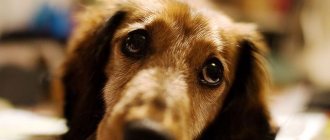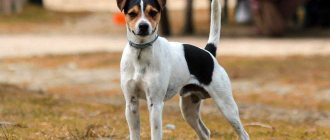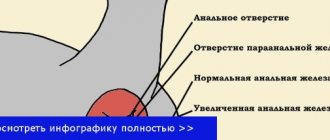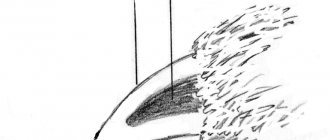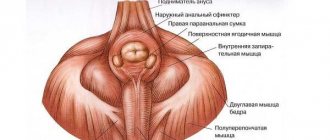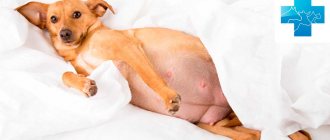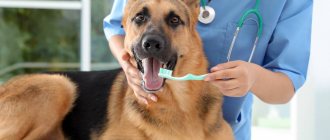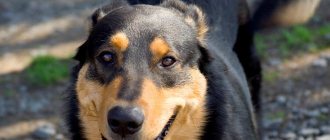Mastitis in dogs is a very unpleasant problem; owners of four-legged pets often have to deal with it. What kind of disease is this and is it dangerous for the animal? Mastitis is inflammation of a dog's mammary glands. This inflammatory process is dangerous not only for the dog itself, but also for its offspring, which it feeds.
Having noticed the first signs of the disease, it is necessary to take all measures to cope with the inflammation. If this process is started, a serious threat to the health of the pet may arise. Mastitis in a dog can develop as a result of postpartum complications or as a result of false pregnancy. Streptococcus and staphylococcus may be to blame for the occurrence of the disease.
What is mastitis
Pathology is a gradual increase in the size of the mammary glands. The inflammatory process can spread to only one pair - or to all five at once.
It is very easy to notice such changes. The problem is that this disease has several varieties. Each of them is treated in a different way, so you should not try to cope with the problem on your own. At best, your efforts simply will not bring results, and at worst, they will aggravate the existing condition.
Measures to prevent the development of mastitis
Measures to help avoid the development of mastitis include:
- Maintaining cleanliness. There should be clean bedding under the dog. Contact between a person and a dog or puppies is carried out only with clean hands.
- Abdominal treatment. You can use a light solution of potassium permanganate.
- Trimming puppies' nails to avoid injury to the mammary glands when feeding.
- Expressing excess milk.
- Review your dog's nipples daily to determine if there are any cracks or wounds and treat them.
In the event of the death of the offspring, the dog must be tightly bandaged and the nipples lubricated with camphor oil.
But the best and most effective preventive measure will be a loving and caring attitude towards the dog, a balanced diet, moderate physical activity and preventive medical examinations.
Main causes of the disease
The main cause of the disease is a bacterial infection that develops independently or against the background of other diseases. The likelihood of infection increases with weakened immunity caused by:
- chronic pathologies;
- hypothermia or overheating (especially dangerous for hairless breeds);
- persistent helminthiasis;
- poor nutrition;
- postoperative complications.
Inflammation can also occur due to hormonal imbalances (false pregnancy) and diseases of the reproductive organs (endometritis, pyometra). The risk group includes uncastrated animals and pets that produce offspring too often.
Often the growth of bacteria provokes lactostasis, that is, stagnation of milk. This disorder occurs when natural pumping is impossible, typical for the following situations:
- too early weaning from the mother;
- small litter;
- mass death of puppies;
- persistent ignoring of individual nipples during feeding.
The risk of infection also increases with teething. Without calculating the force, babies can injure the sensitive skin of their mother's nipples. Their sharp claws may also be to blame.
Prevention
To prevent mastitis in bitches, follow these steps:
- provide comfortable living conditions: the den should not be dirty, cold or too hot;
- regularly treat the bitch against ectoparasites, worms, vaccinate in accordance with the vaccination plan;
- choose a partner for mating who is free from sexually transmitted infections;
- For whelping and lactating bitches, give plenty of ready-made food mixture for puppies, so it will be easier for babies to switch to solid food;
- if there are few cubs and the female’s milk production is high, temporarily switch her to a low-calorie veterinary diet for obese dogs;
- Avoid using hormonal contraceptives to prevent estrus, as well as to terminate an unwanted pregnancy;
- animals in which imaginary pregnancy has recurred are not recommended for use in purebred breeding;
- bitches that are not of breeding value are castrated before puberty;
- Inspect the udder of a lactating uterus regularly and sanitize if microtraumas are detected.
Watch the video:
Classification of pathology
Symptoms and treatment of mastitis in dogs depend on its form. Based on the degree of damage to the mammary glands and the nature of discharge from the nipples, the following varieties are distinguished:
- TOataral
. Breast milk sours, curdles and blocks the holes in the nipples. Nodular formations form in the glandular tissue, disappearing after pumping. Moderate pain and a slight increase in temperature are possible.
- Serous
. The secreted milk turns yellow and becomes watery. Flake-like impurities appear in it. The milk bags swell and become hot. Pain on palpation is absent or mild.
- Hemorrhagic
. Develops as a result of complications of the catarrhal or serous variety. It differs from them in severe pain and fever, as well as the appearance of red spots on the glands.
- Fibrinous
. Accompanied by the release of white threads of coagulated protein, swelling of the lymph nodes and acute pain. When palpated, the affected glands make a crunching sound.
- Purulent
. The released exudate has a cloudy consistency and an unpleasant odor. The ability to lactation worsens or disappears completely. The swollen lobes take on a bright red hue and are very painful when pressed.
- Abscess
. It is a complication of the purulent form. Abscesses grow inside the glands. Their rupture is fraught with death from blood poisoning.
- Phlegmonous
. Another complication of the purulent variety, characterized by inflammation of all milk bags. Without timely treatment, it develops into sepsis.
- Gangrenous
. The affected lobes gradually decompose, becoming blue or dark brown. As a result of necrosis, multiple bleeding ulcers appear on them.
Due to its development, the disease is divided into lactational and non-lactational types. The first occurs when breast milk stagnates, and the second occurs when the milk bags are injured or pustular.
Seeing a doctor
If mastitis turns into a purulent form, contact a veterinarian, because treating mastitis with folk remedies in this case will not give results. Initially, treatment is carried out by means. Antibacterial and restorative therapy is prescribed with drugs such as: Phosphoprenil or Immunofam.
It would be advisable to use topical creams, for example “Stars”. To strengthen the animal's body, vitamins and antihistamines are used. If there is a financial opportunity and there are no time restrictions, a course of ultrasound treatment will give a good result.
In cases where conservative treatment methods are no longer practical, the only solution to the problem is surgery. An advanced form of mastitis, sad as it may sound, can cause the death of a pet.
During surgical intervention, the focus of suppuration is opened, the anesthetized tissue is cleaned and removed. If the case is too complex, the affected area or the entire mammary gland is removed.
During the postoperative period, a specially designed blanket is put on the dog to avoid rupture of the stitches.
The main symptoms of mastitis in dogs with photos
The main sign of pathology is a change in the nature of the discharge. The only exception is the catarrhal form. But even in this case, you can recognize that something is wrong by other accompanying symptoms.
Nipple discharge
Depending on the form of the disease, the discharge may be mucous, serous (watery), white, yellow, greenish or red. They may contain flakes, clots of pus or blood, as well as thread-like formations. Along with the consistency and color, the smell also changes.
If the appearance of the milk causes you serious doubts, stop feeding the puppies. Babies run the risk of becoming infected from a sick mother, so they should be separated until they fully recover.
Other signs
Other signs of mastitis in dogs include behavioral changes. The malaise is accompanied by severe weakness, drowsiness, apathy, loss of appetite and severe thirst.
Due to the pain, the four-legged mother may become very anxious and aggressive towards her puppies, preventing them from touching the nipples. Poor nutrition is fraught with stunted growth, so all babies will have to be switched to artificial feeding.
Among the physiological symptoms of inflammation are the following:
- cessation of lactation;
- pain and crunching when palpating the nipples;
- swelling and hardening of the affected tissues;
- changing the color of milk cartons to red or blue;
- enlarged lymph nodes;
- increase in local and general temperature;
- the occurrence of abscesses and necrosis.
When a certain lobe is affected, its asymmetry in relation to the rest is noted. Even a gentle touch can cause your pet severe pain, so to make a diagnosis, it is recommended to schedule an examination at a veterinary clinic.
Tips for dog owners
A newly whelped bitch requires special care. At this time, her body is especially vulnerable.
If the animal is kept outdoors, then you need to insulate its enclosure with your own hands. It is important to ensure that the litter is dry and clean. When they become dirty, they should be changed.
With the onset of cold weather, you need to curtain the opening to the kennel with thick fabric, which can protect the animal from the wind.
An apartment dog needs to be provided with a place suitable for both the mother and her puppies. The location should not be in the kitchen or bathroom. You cannot place your dog on the doorstep because there is constant draft from the door.
Diagnosis and treatment
Without laboratory and instrumental diagnostics, it is difficult to distinguish pathology from diseases with similar symptoms: adenoma, mammary gland hyperplasia and mastopathy. For this reason, after examination and history taking, the following studies are carried out:
- general and biochemical blood tests;
- cytology;
- PCR diagnostics of secreted exudate and breast milk;
- Ultrasound.
Based on the results obtained, the veterinarian determines the pathogen, the exact form and stage of the disease. This data helps to understand how to treat mastitis in a dog, whether it should be hospitalized and whether it needs urgent surgery.
Please note that before visiting the veterinary clinic, you can provide first aid to your pet. To do this, you need to express her milk manually and reduce the amount of liquid you drink.
Expressing is unacceptable only if foreign impurities appear and if there are cracks in the nipples. No less dangerous is the heating of inflamed bags, which is fraught with the growth of pathogenic bacteria and the breakthrough of ulcers.
Veterinarian appointments
Treatment of mastitis in a dog at home is permissible only for catarrhal and serous varieties. In other cases, the animal is often left in the veterinary clinic until it feels better.
The main method of treatment is taking antibiotics (Sinulox, Cefazolin, Ampicillin) and antimycotics (Griseofulvin, Amphotericin). The duration of therapy is determined individually and can vary between 5-30 days. Other drugs are prescribed to relieve associated symptoms:
- anesthetics
(Novocaine), eliminating severe pain;
- diuretics
(Furosemide), facilitating the removal of stagnant fluid;
- anti-inflammatory
(Travmatin, Mastometrin), suppressing the inflammatory process;
- immunomodulators
(Gamavit, Katozal), restoring the body's defenses.
Surgery is performed for extensive abscesses and necrosis, that is, only in advanced stages. Under general anesthesia, all accumulated pus is removed from the animal and damaged tissue is excised. Depending on the degree of damage, the mammary glands are removed in whole or in part.
Home therapy and care
In addition to taking medications, a sick pet may need massages. They are prescribed for mild forms of pathology, excluding necrosis and purulent discharge. The technique is quite simple:
- Gently massage the affected gland in a clockwise direction. The force applied should correspond to light scratching.
- Move from the base to the nipple. If there are several affected lobes, move on to the next one as soon as you deal with the previous one.
The duration of the massage of one lobe should be about 5 minutes, and the number of procedures per day should be 2-3 times. Rubbing can be done together with camphor oil.
The rest of the time, the glands must be treated with special ointments or folk remedies approved by a veterinarian. Most often, lotions made from cabbage leaves and decoctions from sage, oak bark or chamomile are used. After applying external preparations, the lobes are tightly bandaged to protect them from external influences and stimulate the outflow of exudate.
Treatment methods at home
With a mild course of the disease, therapeutic measures can be successfully carried out using traditional medicine in the home environment.
The puppy should be applied to the affected nipple of a nursing bitch as often as possible, thereby avoiding stagnation of milk and cold compresses. You need to massage the affected area at least 2 times a day. After preliminary consultation with a veterinarian, ointments can be used to help relieve the symptoms of mastitis. These products include: Trauma-gel and Phytoelite.
If there is a suspicion of the development of mastitis in a dog that is not nursing, it is necessary to ligate the nipples and apply a bandage. The bandage should be applied tightly, but not to interfere with normal breathing. As in the previous case, it would be advisable to use ointments against mastitis.
Complications and dangers of the condition
Late diagnosis and self-treatment are fraught with the growth of abscesses and gradual tissue death. In addition to complications of the existing form, damage to other organs is possible with the following consequences:
- malignant neoplasms;
- sepsis;
- infectious-toxic shock;
- acute intestinal disorder;
- pyometra;
- loss of reproductive function;
- inflammation of the spinal cord.
Ultimately, the animal may die, so do not delay in contacting the veterinarian. The sooner treatment is started, the faster and easier the recovery will be.
What is the danger of mastitis?
Inflammation of the udder leads to the following consequences:
- Disease and death of puppies. In the affected gland, pathogenic microflora develops, causing intestinal disorders. Inflammation leads to a decrease in milk production and starvation of the cubs.
- Death of the bitch: inflammation quickly spreads to the genitals. Pyometra develops - purulent inflammation of the uterus.
- Formation of tumors - chronic mastitis causes the formation of a benign neoplasm that is prone to malignant degeneration.
- Loss of reproductive functions: even with a favorable course of the disease, individual packages of the mammary glands fail, and degenerative processes occur in the ovaries and uterus.
additional information
You can find answers to the remaining questions in the following sections. They will talk about what to do when separated from a sick mother, whether nulliparous animals can get sick, and how exactly a false pregnancy leads to inflammation of the milk bags.
How to feed puppies while treating a mother bitch
Mastitis in a nursing dog can lead to acute poisoning of its puppies. If there are impurities in her milk, then the babies must be isolated.
As an alternative food, special dry mixtures that imitate dog milk are used. Unlike cow and goat milk, this milk contains much more protein and fat. It is well tolerated by the body and does not cause gastrointestinal upset.
During treatment, it is recommended to seal or bandage the nipples of a sick pet. In this case, the puppies will definitely not be able to get to them without your knowledge.
Please note that with catarrhal and serous forms, breastfeeding is acceptable. With this diagnosis, only the affected lobes are bandaged. Milk produced from healthy nipples is not dangerous, so access to them is maintained.
Does mastitis occur in nulliparous dogs?
Mastitis in nulliparous bitches is very rare. Usually, immunodeficiencies and hormonal imbalances are to blame. Problems with hormones are typical for animals that regularly go through empty heats. In this case, inflammation is not the worst consequence, since uncontrolled use of contraceptives can result in cancer.
Mastitis and false pregnancy
One of the possible consequences of hormonal imbalance is false pregnancy. It develops 2-3 months after estrus and is accompanied by an enlargement of the mammary glands and milk production. Both symptoms go away on their own after some time.
Particularly dangerous are frequent false pregnancies and excessive lactation. In both cases, the risk of inflammation increases, since natural expression is impossible due to the lack of puppies.
The disorder is treated with a special diet. It excludes the consumption of foods that stimulate milk production and excess liquids in the diet.
The need for drug treatment depends on the accompanying symptoms and overall health. If a false pregnancy is diagnosed at least twice, then the animal is recommended to be excluded from further breeding and sterilized.
Preventive actions
Mastitis in dogs is a factor-based disease. Infectious agents play a minimal role - in the vast majority of cases, only opportunistic strains of bacteria are found in pathological secretions. Therefore, prevention is based on the following principles:
- feeding should be balanced and correspond to the physiological period;
- the keeping room should be warm, dry, the dog should be provided with regular walking;
- timely vaccination, treatment against parasites, early diagnosis and treatment.
Particular care must be taken during pregnancy and childbirth. During this period, the dog is most susceptible to pathogenic influences due to exhaustion, intoxication and hormonal changes. Owners should reconsider their usual diets, balance them in protein, microelements and vitamins.
Mastitis at an early stage of its development is easily stopped, dogs do not experience serious discomfort and recover quickly. But since most owners are not aware of the symptoms of this pathology, they begin to treat only when the clinical picture is pronounced. More often, the disease occurs in guard dogs kept in inappropriate conditions - cold and damp kennels, cramped enclosures.
How to diagnose the disease
Only a doctor can make an accurate diagnosis. Initially, a general examination of the dog is carried out, an anamnesis is collected (life history, nutrition, maintenance, etc.) and possible similar pathologies are excluded. Upon direct examination of the mammary gland, the doctor reveals:
- Borders of the neoplasm.
- The size of the “nodules”, their number and prevalence.
- Whether there is pain or not, how severe the inflammation is.
- Whether the local temperature is elevated or not.
A piece of tissue is taken from the affected glands and nearby lymph nodes for examination (biopsy) to accurately determine the nature of the tumor and exclude/confirm its malignancy. Blood is taken for general analysis and biochemical analysis to determine the general health of the dog.
Additionally, an ultrasound of the abdominal cavity and a chest x-ray are prescribed to exclude metastasis to internal organs and tissues. Very often, with malignant spread and multiple metastases, only a small, dense and painless nodule forms on the surface of the mammary gland.

